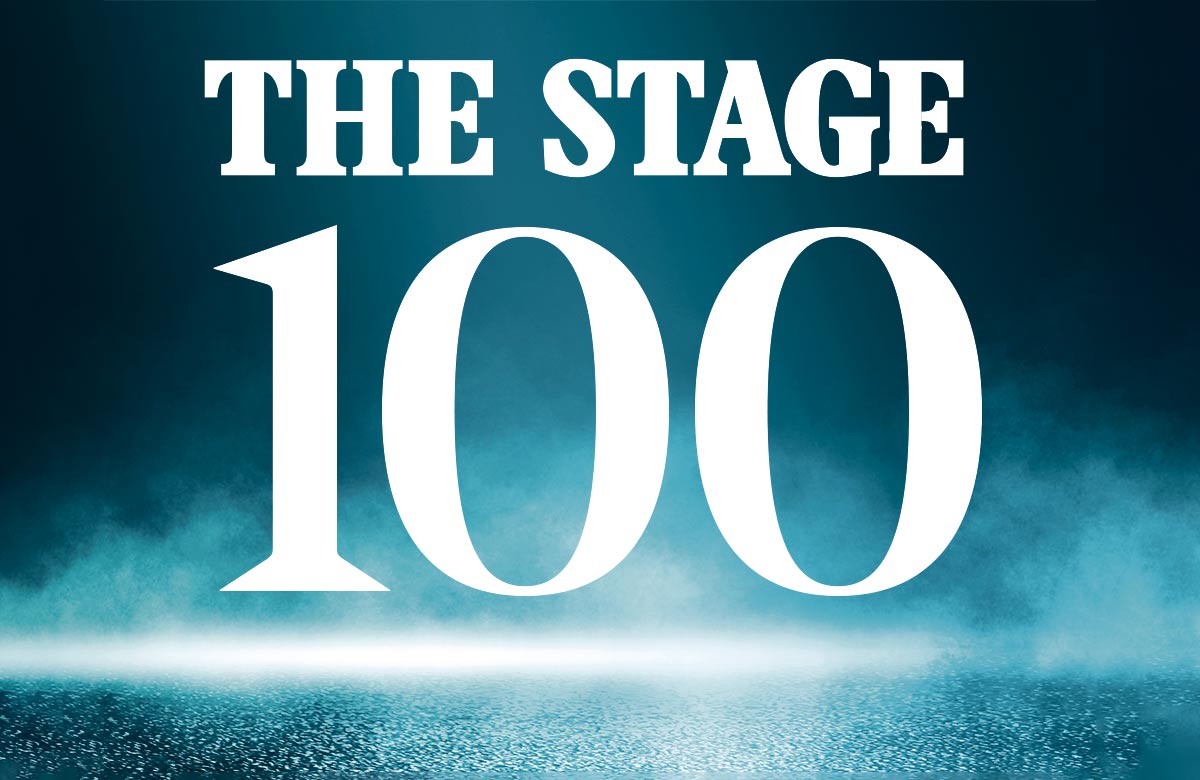The Stage 100 2023
Why? This is the question we ask ourselves as a team before we set out to compile The Stage 100 every year.
A little over 12 months ago, we posed ourselves this question and couldn’t come up with a good answer. So, we didn’t run The Stage 100. Towards the end of 2021, theatre was still in the grips of Covid and there wasn’t much that a list of the 100 most influential figures could tell us about the state of the industry that would have proved interesting or useful. And it was pretty clear the single most influential organism within the performing arts industry at that time was Covid. Instead, we published The Stage 25 in January 2022 to shine a spotlight on a selection of rising stars from across the industry who we hoped would help theatre build back better.
A year earlier, we had pivoted The Stage 100 to remove the competitive element of a list numbered one to 100 and to focus on celebrating those who had gone above and beyond to help the sector in its first year battling the effects of coronavirus. This was, it’s worth highlighting in the context of this year’s list and the figure placed at number one, the only time the function of The Stage 100 has been purely celebratory.
This means The Stage 100 in 2023 is the first ‘traditional’ version of the list since early 2020, pre-Covid. It returns slightly altered: while the top 20 is numbered, the rest of the list is not, but, fundamentally, it uses the same criteria as in 2020.
The Stage 100 has – for more than a quarter of a century – charted the changing face (and faces) of the UK theatre industry. It has plotted the shifting power bases at the top of the commercial sector – from an early period dominated by Cameron Mackintosh and Andrew Lloyd Webber through to the years of the Ambassador Theatre Group’s growing power. More recently it has shone a spotlight on broader types of influence: from the huge creative influence of producer Sonia Friedman to the impact architect Steve Tompkins has had on the physical infrastructure of the sector, to the way Vicky Featherstone instigated crucial conversations that called out abuse and challenged historic, unhelpful, even damaging power structures within theatre.
Now, as the sector begins to emerge from the other side of the pandemic, it felt as if The Stage 100 could play a role in charting the sector’s recovery, in trying to create a picture that reflected how the pre-Covid power structures had been affected by the biggest upheaval the British theatre sector has ever faced.
How similar would the 2023 list look to the one from 2020? Had theatre built back better or just rebuilt the same? Had some parts of the industry recovered more quickly than others?
Broadly, this year’s list reflects the fact that the power structures of the UK theatre industry have been little affected by Covid, and that commercial theatre – certainly in London – has begun to bounce back more quickly than the subsidised and not-for-profit sector. Those with the greatest resources have been able to deploy them to recover more quickly from the shock that was delivered by the mass shutdown of the sector.
And this is definitely one story the 2023 list tells. But, as we discussed who should top the list this year, somewhat to our surprise another story emerged.
Covid taught us what a huge influence government decisions could have on our day-to-day lives. That was just as true for theatre as it was for individuals.
The events of recent months have underlined this fact. While the first stirrings of arts funding crises are just starting to become apparent in the devolved nations, in England the upheaval has already taken place and it has been huge.
The Stage 100 has never featured a politician in its number one spot. In fact, it has never featured a politician at all. But the impact that a single culture secretary – in post for less than 12 months – has had on the performing arts has been unprecedented – and extremely worrying.
The damage to opera, new writing and the London scene is very real, but perhaps the greatest damage of all has been to the principle of arms-length funding.
Since the advent of the Arts Council, there had been an understanding that politicians should not get involved with the specifics of arts funding. But, as with so much of our political life, this understanding has been shown to be extremely fragile under politicians who did not feel constrained by historical norms.
The Rubicon has now been crossed and, in the end, this long-cherished principle was allowed to die with barely a whimper.
So, to return to our initial question: why? Alongside its more traditional role of charting the evolution of the theatre sector, The Stage 100 list should this year also serve as an alarm – a warning of just how vulnerable large swathes of the performing arts are to the whims of politicians.
How we chose The Stage 100
Stage one
We invited 50 leading figures from the performing arts industry to anonymously submit the five people they would place from number one to five in the list, plus one other name they believed should feature and why. The figures were drawn from different areas and professions in the industry.
Stage two
We invited senior editorial contributors to The Stage to submit their suggestions for the final list.
Stage three
A judging panel (comprising editor Alistair Smith, deputy editor Matthew Hemley, associate editor Lyn Gardner, features editor Georgia Snow, reviews editor Sam Marlowe and columnist David Benedict) considered all the names submitted in stages one and two, added their own submissions and decided on the final list.
About The Stage 100
Now in its 26th year, it is the definitive list of the most influential figures in the UK theatre and performing arts industry. It focuses on achievements in the past 12 months, but also takes into account overall standing in the industry. Anyone working in theatre and the performing arts (on stage, off stage or in support roles) is eligible.
As with any list, the final 100 is subjective. However, we go to great lengths to ensure our 100 reflects the breadth of the industry and its most influential people.
In its first couple of years, the list was decided by vote, but the decision-making process was taken in-house as it threatened to turn into a popularity contest. Now, it is judged from the point of view of The Stage as an industry publication. This means that as well as artistic achievement, we look at financial performance, number of jobs created and the impact on the sector.
Large-scale commercial and subsidised companies tend to feature heavily, as they account for most theatregoing in the UK – but we also try to feature names from across the industry, at all scales and in all places.
‘New entry’ denotes that a person did not feature in the 2020 list. Numbered positions are compared with the person’s position in 2020.
Recommended for you
Recommended for you
Most Read
Across The Stage this weekYour subscription helps ensure our journalism can continue
Invest in The Stage today with a subscription starting at just £7.99














